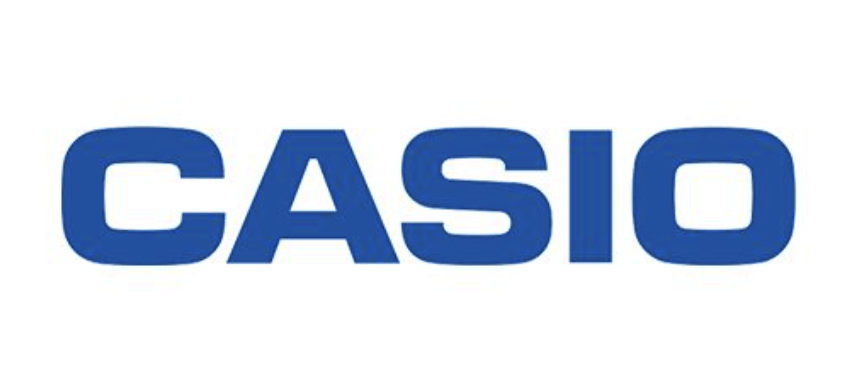����ժ¼Ϊ2017�����������Լ���ص�ɽ��
Gangapurna (7,455m - NEPAl)
Although this might be seen as a direct variation to the quite remarkable and possibly little known 1981 Canadian ascent of the south face of Gangapurna (7,455m) in the Annapurna
Himal, the Korean Way (1,500m ED+) warrants a special mention. Particularly notable was the speed of ascent given the highly complex approach, the difficult technical climbing above 7,000m, and the fact that it is the first new route at that altitude climbed by Koreans in alpine style.
The accomplished trio of Cho Seok-mun, Kim Chang-ho, and Park Joung-yong acclimatized by almost making the first known ascent of Gangapurna West (7,140m), a recently permitted summit with no reported attempt. After three bivouacs on the south face, and not far from the summit ridge, Park, not properly acclimatized, decided to wait. The remaining two climbed to the ridge but turned back 100m from the top, because they felt a sUCCessful summit was meaningless without a colleague's safe return.
Later, all three bivouacked at 6,000m below the start of the main difficulties on the south face of Gangapurna. After a subsequent night at 6,800m and a second at 7,100m, between which lay the crux - nine pitches of steep mixed and ice, all three reached the summit. Descent
was made over two days, rappelling the route.
CHO SEOK-MUN
KOREA
Year of birth : 1969
- Instructor of Mountaineering Training Institute of K.A.F.(Korean Alpine Federation)
- Summited all 14 Giants without supplementary oxygen, 2013
- First Ascent, a variant new route on the Rupal Face of Nanga Parbat (Pakistan) in 2005, on Himjung in the Peri Himal (Nepal) in 2012, and on Batura 2 in the western Karakoram (Pakistan) in 2008
- Solo first ascent on four peaks of 6,000m in the Hinduraj and Karakoram (Pakistan) in 2003
KIM CHANG-HO
KOREA
Year of birth : 1974
- UIAA International Route-Setter
- First ascent, a variant new route on The North Face of Mt. HUNTER (Alaska) in 2012
- Ascent on the Moonflower Buttress of Mt. Hunter (Alaska) in 2011 and on ��The Nose�� route in a day, Yosemite valley in 2010
- First ascent, Batura 2 in the western Karakoram (Pakistan, 2008)
- Ascent on Torres Centrale del Paine in patagonia, 2007
PARK JOUNG-YONG
KOREA
Year of birth : 1976
- Rescue Team of the K.A.F.(Korean Alpine Federation)
- Solo first ascent, a variant new route on the North face of Kwangde (Nepal) in 2009
- Ascent on Makalu with O2 in Nepal (2008) and on the route ��Ship of Fools�� of Shipton Spire (Pakistan) in 2005
- Attempt on a new route on South face, Lhotse in Nepal in 2005
- Member of the Korean sport climbing national team in 2001
 Caption: The south face of Gangapurna, showing (red) the Canadian Route (1981), and (yellow) the Korean Way (2016). The camp shown on the left, at 5,806m, was used in 2016 to access the bottom of the face and also the south face of Gangapurna West, out of picture to the left.
Caption: The south face of Gangapurna, showing (red) the Canadian Route (1981), and (yellow) the Korean Way (2016). The camp shown on the left, at 5,806m, was used in 2016 to access the bottom of the face and also the south face of Gangapurna West, out of picture to the left.Gangapurna, South Face Direct, Korean Way; Gangapurna West, South Face (Almost to Summit)
Nepal, Annapurna Himal
Climbs And Expeditions
Author: Kim Chang-ho
Climb Year: 2016
PubliCATion Year: 2017
What to do next? This question lingered in my mind after I completed all the 8,000ers without supplementary oxygen. Like everyone else, I don��t have a compass that keeps me directed on the right line to follow. So I thought about my lifelong passion for authenticity in the spirit of mountaineering. This spirit has taught me principles: to overcome one��s own limit, to pursue uncertainty, and to explore beyond the end of the road. Keeping these in mind, I devised the ��Korean Way Project,�� which aims to create natural lines on unclimbed peaks and walls, climbing under our own steam, our own responsibility, with no extra equipment.
There is a specific set of criteria that determines the peaks to be climbed. Will the exploration required to reach the base of the mountain make a valuable contribution to the climbing community? While climbing, will we be able to respect local people��s sentiments for the mountain? Is the proposed route a natural and ��smart�� line? Taking all these into account, I decided to try a direct route on the south face of Gangapurna (7,455m) and attempt the first known ascent of Gangapurna West (7,140m, sometimes called Asapurna), which the Nepalese government has recently renamed Lachenal Peak.
I invited two friends, Choi Seok-mun and Park Joung-yong. Seok-mun has climbed with me several times outside Korea, including an expedition in 2001 to five peaks in Pakistan, one to the Central Tower of Paine in 2007, and the first ascent of Batura II (7,762m) in the Karakoram in 2008. Joung-yong was with me in 2004 on the south face of Lhotse, and in 2008 on an ascent of Makalu.
Reaching base camp was not easy due to the swollen Modi Khola: At one point we had to make a makeshift 10m bridge, and another time a Tyrolean crossing to assist our porters. We EVENTually established base at 4,034m, by the stream flowing from the Annapurna East Glacier.
Gangapurna West came onto the permitted list in 2014 and has received no reported attempt. On October 5 we left base camp with plans to be out for five days. We went up onto the glacier and climbed a south-southwest-facing spur to a bivouac at 5,806m. Next day we climbed steep snow and some seracs to a second bivouac at 6,200m, below the upper south face. We spent two nights here as we explored a route through the complicated glacier terrain above. At 1:30 a.m. on the 8th we started for the summit, climbing fast, roped together, but only belaying ocCASIOnally on the steep face. Seok-mun and Joung-yong were rather slow due to insufficient acclimatization. Not far below the summit ridge, Joung-yong decided to stop and wait for our return. Seok-mun and I climbed three pitches to the ridge. The top was only 100m away. We halted and discussed the values of ��an unsuccessful attempt�� and ��a colleague��s safe return.�� An ascent without all colleagues was meaningless to us; we shared everything, and the expedition must be ��from home to home.�� We decided to leave the top untrodden.
I first saw the south face of Gangapurna in the 1964 Alpine Journal, a rare aerial photograph taken in 1952 by Swiss cartographer Toni Hagen. Since a German expedition made the first ascent of the mountain, via the south face and east ridge in 1965, seven parties had reached the summit. There were five different routes, mostly from the north, and in 1981 Canadians climbed the south face. We aimed to climb a direct route to the right of the Canadian line.
We planned to use the same approach as we had for Gangapurna West, climbing to our First Bivouac then traversing east onto the upper glacier. The unstable weather concerned us. We had drizzle at base camp until the 12th, the date of the 2016 Dashain festival, which normally announces the start of dry weather after the monsoon. After a good rest at Machapuchare base camp, we returned to our own base camp and left for the mountain on the 16th with 8�C10kg sacks, two 7.5mm 60m ropes, six screws, three pickets, one two-person tent, a short pad, a stove, and food.
After moving onto the upper glacier, we made our second bivouac at 6,000m, just below the south face. On the third day we simul-climbed the lower part of the south face, belaying occasional ice patches. That night, at 6,800m, was miserable, sitting on a chopped-out ice platform under a rock overhang. The next day we climbed the rock barrier directly: nine pitches of mixed terrain with thin ice over steep rock. Eventually, a narrow icefall led to a low-angle slope. We placed our tent in the middle of this slope, at 7,100m, and despite a very strong wind that kept pulling us away from the wall, we enjoyed being able to lie flat. The food was gone, but we had hot water.
We reached the top the next day, October 20, thankful that all three of us were there together. For the next two days we descended the 1,500m wall via the same route, using natural gear, snow bollards, and Abalakov anchors. Otherwise, all we left on the mountain were two snow pickets and 6 to 10kg of body weight apiece. The new route on the south face of Gangapurna (Korean Way, ED+) was a way of burning our bodies.
Summary: Direct new route up the south face of Gangapurna (7,455m) in the Annapurna Himal, by Choi Seok-mun, Kim Chang-ho, and and Park Joung-yong, October 16�C22, 2016. The same team also attempted the south face of unclimbed Gangapurna West, climbing the south face to the summit ridge. This report was translated from Korean by Oh Young-hoon.
The Canadian Route: The 1981 route on Gangapurna, climbed more or less in alpine style by James Blench and John Lauchlan, was a remarkable achievement for the era. After a four-day storm pinned them in a snow cave at around 5,480m, the pair set out on April 20 with Dwayne Congdon and Dave McNab, bivouacking that night in the bergschrund at the foot of the face. From there two climbers led the way, leaving ropes for the second pair to follow with heavy loads. Bad weather again pinned them down, and by the time they were in a position to attempt the rock band, on April 26, Congdon and McNab were too ill to continue. While they descended, Blench and Lauchlan went for the top, and after three more bivouacs and much technical climbing on 80�� ice and mixed, they gained the upper snowfield and headed for the summit, which they reached at 3 p.m. on the 30th, amid a lightning storm. Blench was very sick the following day, and Lauchlan spent two days lowering him down the route to the bergschrund, where the two were met by Congdon and McNab, who helped them to base camp. Due to all the bad weather, the face was in far snowier condition than at the time of the Korean ascent.
 Caption: The south face of Gangapurna. The left-hand line is the 1981 Canadian Route, with five bivouac sites marked above the bergschrund camp. The right-hand line is the Korean Way, with two bivouac sites marked above the bergschrund camp. The camp on the left is the bivouac at 5,806m used to access the bottom of the face and also the south face of Gangapurna West.
Caption: The south face of Gangapurna. The left-hand line is the 1981 Canadian Route, with five bivouac sites marked above the bergschrund camp. The right-hand line is the Korean Way, with two bivouac sites marked above the bergschrund camp. The camp on the left is the bivouac at 5,806m used to access the bottom of the face and also the south face of Gangapurna West.2017���������� �Ƿ��ķ����Ӣ��
��ɽ���Ǻ��ķ����Ӣ��
�ɶ��Զ��ܲ�
�ղ�������һС�Σ������ҿ��ٶȻ�ȸ跭��
����������ϡ�����˶�š��������������ʵǺ���7455���Ჴ��Gangapurna�ϱ�
��Ȼ����֮·��1,500��ED +���ɱ���Ϊ1981�����ô�����Annapurna Himal��Gangapurna (7,455m) ���ϱ��ʵǵ�һ�����֣������Ǵ��ʵ���Ϊ��֪���൱�˲��𣬵��˴��ʵ�ҲӦ�ñ��ر��ἰ���ر�ֵ��ע����ǣ����Ǻ����������ֺ�������ʽ�����ɵĵ�һ��ȫ����·�����Ǻ��γ���7000�ļ��Ѽ����ʵǣ���������˸��ӵķ�ʽ�ʵǣ������������ʵ��ٶ�Ҳ�dz��˲���
Although this might be seen as a direct variation to the quite remarkable and possibly little known 1981 Canadian ascent of the south face of Gangapurna (7,455m) in the Annapurna Himal, the Korean Way (1,500m ED+) warrants a special mention. Particularly notable was the speed of ascent given the highly complex approach, the difficult technical climbing above 7,000m, and the fact that it is the first new route at that altitude climbed by Koreans in alpine style.

















 ���������������Ҵ��룬�ղ�����֤�룬��ϵ����Ա��:zhb7171608
���������������Ҵ��룬�ղ�����֤�룬��ϵ����Ա��:zhb7171608 















��������
����
�����ڣ�2018-10-29 16:34
����
�����ڣ�2018-10-29 15:22
������Ӣ�����
�����ڣ�2018-10-29 15:01